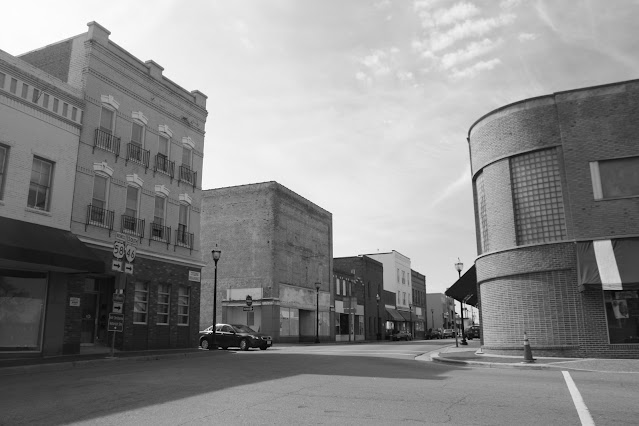Lawrenceville serves as the seat of government and the agricultural and industrial hub of rural Brunswick County. Though the home of the county courthouse since 1783, the Town of Lawrenceville did not form until 1814 and did not incorporate until 1874.
 |
| The Albertis S. Harrison, Jr Courthouse opened in 1999. |
It is believed that the town's name came from a racehorse named Lawrence, who was owned by a wealthy landowner who had built a nearby racetrack in the late 1700s. For most of the 1800s, Lawrenceville sat at the intersection of two stagecoach lines. The town would later prosper when the Atlantic and Danville Railroad established its shops here. Today, Downtown Lawrenceville is listed in the National Register of Historic Places
It was in 1888 that a former slave, James Solomon Russell, established what would become known as Saint Paul's College. The historically black institution was affiliated with the Episcopal Church and first focused on teaching and agricultural and industrial careers. By the 1940s, the school began offering four-year degrees and grew to include the liberal arts. Unfortunately, the school closed in 2013, and nearly all of the former 183-acre campus sits abandoned.
A trip to Lawrenceville or Brunswick County would not be complete without some Brunswick Stew. The tomato-based stew that includes beans, vegetables like corn and okra, and typically chicken or even rabbit is a way of life here. The Taste of Brunswick Festival - held every October - has a Brunswick Stew cookoff plus other traditional festival activities.
Site Navigation:
Sources & Links:
How To Get There:



Comments